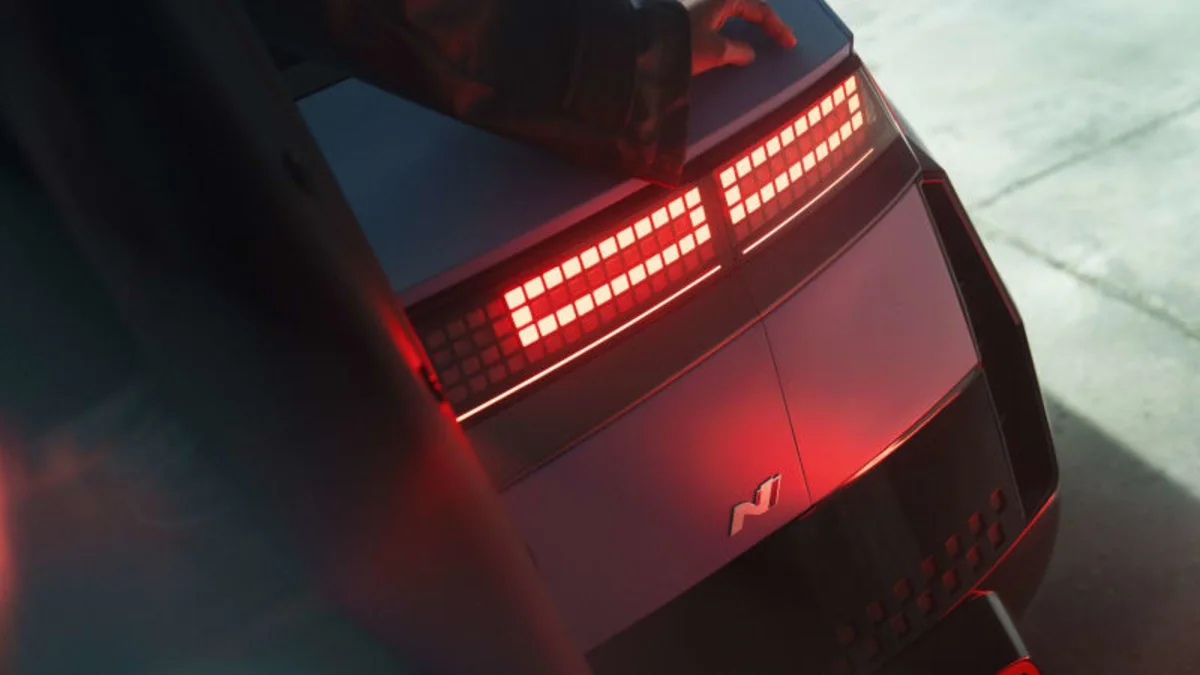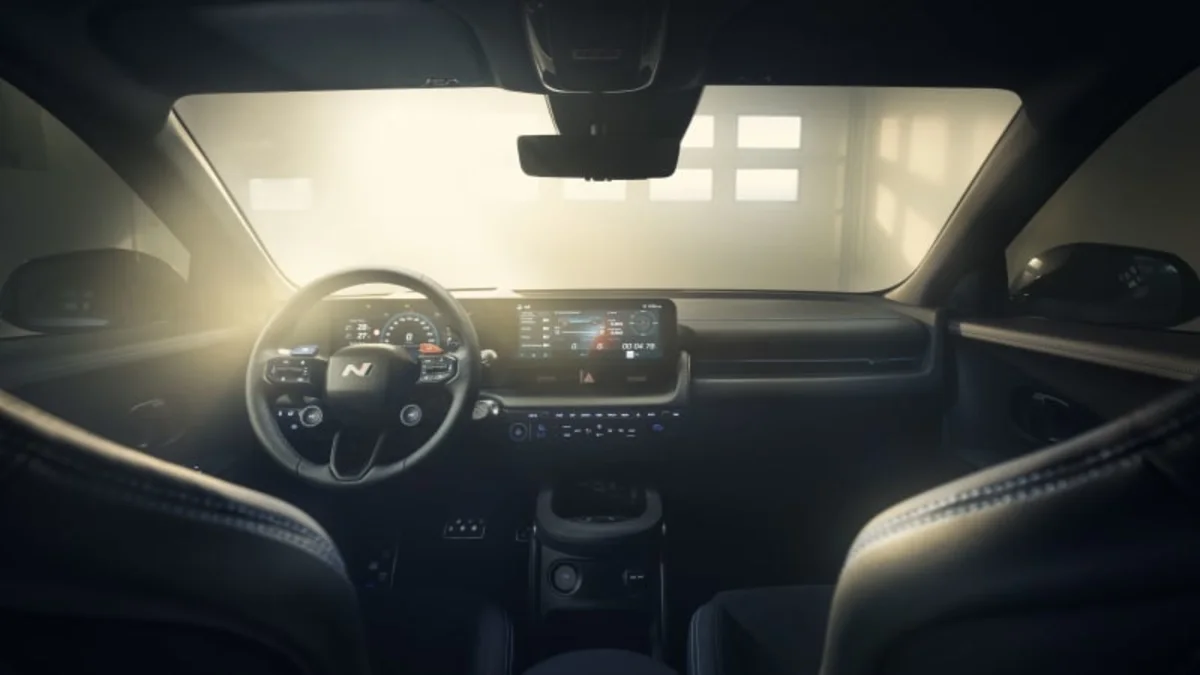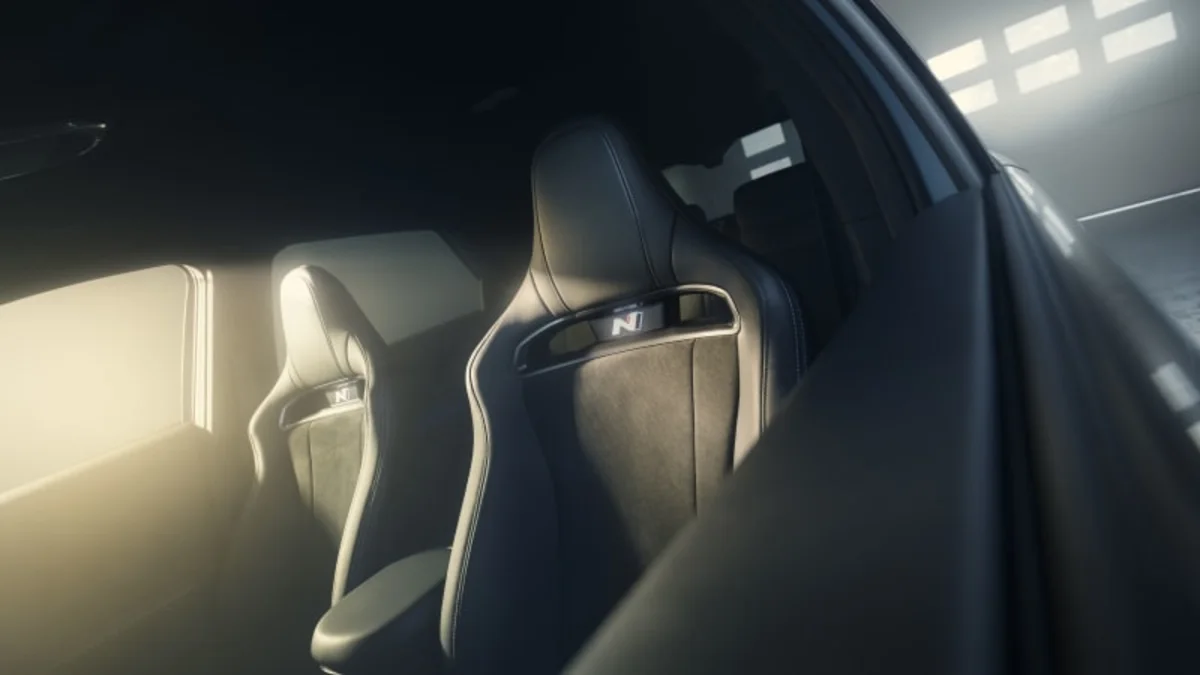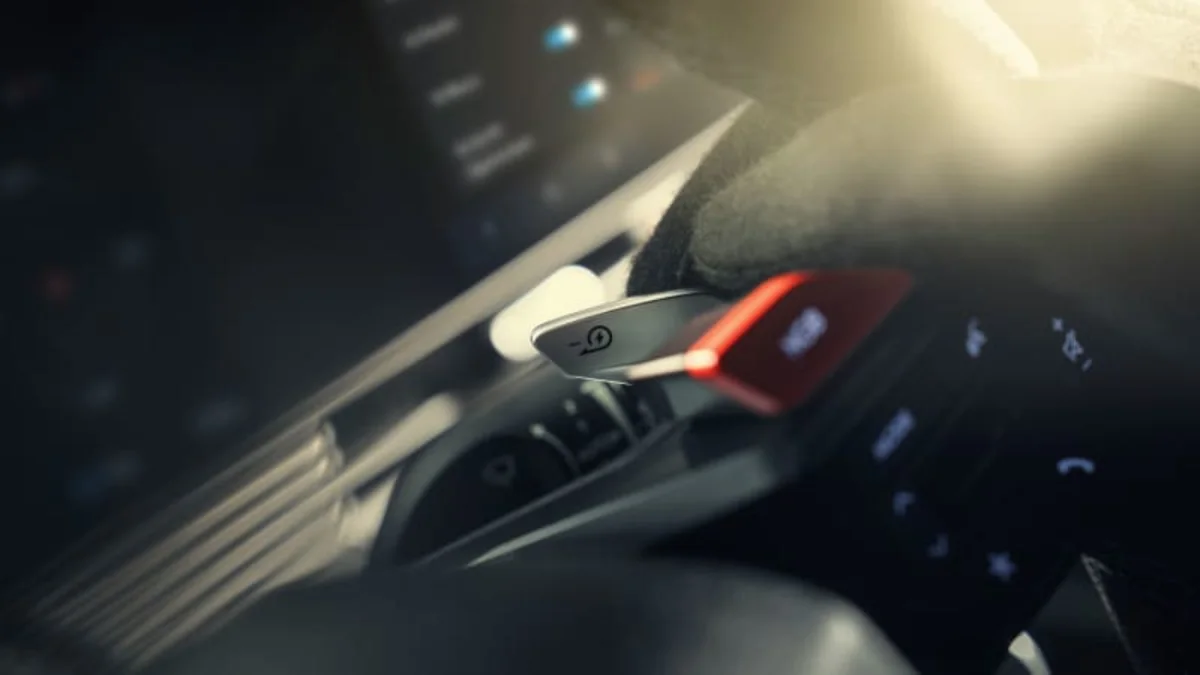Hyundai’s new high-performance Ioniq 5 N crossover debuted today at the Goodwood Festival of Speed. This hotly anticipated enthusiast machine turns the performance dial up on Hyundai’s all-electric hatchback in just about every way, so there’s a lot to cover. Let’s start with the basics.
The standard Ioniq 5 tops out at 320 horsepower and 446 pound-feet of torque. That’s more than enough for a mainstream family crossover, so naturally Hyundai chose to take that already-respectable horsepower figure and double it. The N’s peak output is a rounding error north of 640 hp and 567 lb-ft, albeit with a catch. Those peak numbers require the use of the Ioniq 5 N’s “N Grin Boost” boost feature, which is an evolution of a similar offering on its gas-powered N models. Without this 10-second boost, you get “just” 600 horsepower and 545 lb-ft of torque. How pedestrian. Hyundai says it’s still good for a 0-100 km/h time of 3.5 seconds without the boost — or 3.4 with it.
Those numbers place it above its close sibling, the 576-horsepower Kia EV6 GT, within the broader E-GMP ecosystem. Like the EV6, the Ioniq 5 is more than just a larger, 84-kWh battery and more potent electric motors. Hyundai says the Ioniq 5 N is both lower and wider than the standard AWD Ioniq 5 and comes with larger (21-inch) wheels to boot, improving grip and offering an imposing, hot-hatch-like stance. Hyundai said the reduced height combined with a redesigned adaptive suspension lowered the N’s center of gravity too.

Big batteries mean a hefty curb weight. The N’s prodigious output will camouflage that under acceleration, but to rein it all back in, Hyundai equipped the Ioniq 5 N with beefier brakes (15.75-inch rotors in front; 14.2 out back) and Pirelli P-Zero performance tires in 275/35R21. Hyundai says the Ioniq 5’s regenerative braking system (the strongest available, with 0.6G of max deceleration, Hyundai says) helps manage heat and obviates the need for a carbon ceramic upgrade. Range figures are not yet available.
Much of what Hyundai did to the Ioniq 5 N’s exterior was purely in the name of function. The wider front (25 mm) and rear (55 mm) bumpers help contain the wider track that comes with those beefier wheels and tires. A set of active air flaps helps improve brake cooling, and the pronounced rear wing and diffuser help smooth air as it is shed from the rear of the car. Inside, the upgrades are more cosmetic than functional. The front buckets can be had in either cloth and leather or faux suede (“Eco Alcantara”) and leather. Despite being an EV, the Ioniq 5 N embraces physical controls, incorporating two “N” mode quick-select buttons along with a standard drive mode selection toggle and the N Grin Boost (“NGB”) button.



Beneath the surface, Hyundai did quite a bit of fiddling to improve the Ioniq 5 N’s performance and feel in the hands of an ambitious enthusiast. The “N Pedal” brake system was also programmed to help aid with weight transfer, specifically to sharpen up corner entry and the all-wheel drive system incorporates what Hyundai calls “N Torque Distribution” to make sure power goes where it needs to and an electronic limited-slip differential helps divvy that up to the rear wheels as needed. Hyundai beefed up the Ioniq 5’s steering column and replaced the box itself with a performance-oriented unit, which should improve steering response and feedback.
Speaking of feedback, Hyundai’s trying something a little weird with the Ioniq 5 N. Its new “e-shift” programming allows the car to behave as if it is equipped with a conventional multi-speed transmission. Hyundai programmed it to behave similarly to its dual-clutch units, offering eight “gears” and deliberately interrupting torque delivery with each “shift” to fully replicate the experience and taps into the regenerative braking system to replicate engine braking.

That’s paired to a new system that Hyundai calls “N Active Sound,” and you’ve probably already guessed what it does. In addition to offering an ICE-based soundtrack to accompany your normally silent electric motoring, there are two “futuristic” engine sound modes designed to lean into the N’s electric character. The “Supersonic” sound mode was inspired by fighter jets, Hyundai says.
Hyundai’s information dump lacked two key details: total range and pricing. We expect to learn both in the coming months; stay tuned.
Related video
Read the full article here


